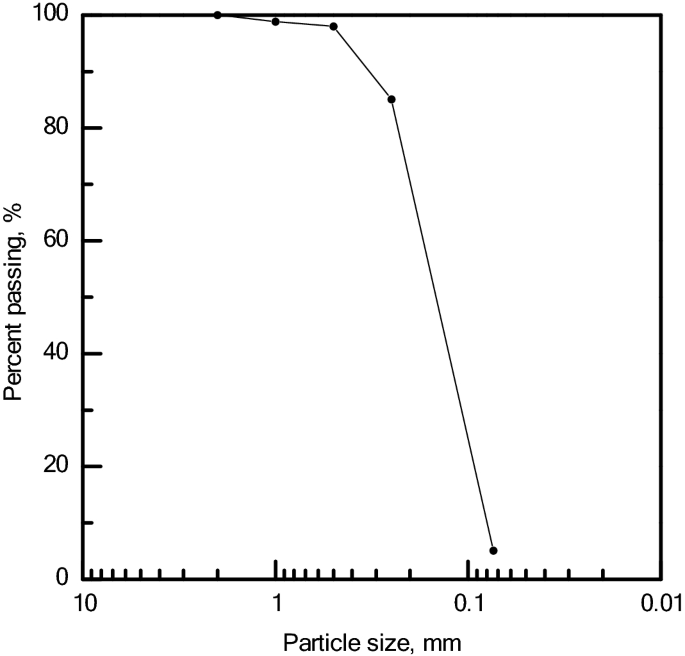
Middleton, N. & Thomas, D. S. G. World Atlas of Desertification 182 (Arnold, London, 1997).
Wang, T., Xue, X., Zhou, L. H. & Guo, J. Combating aeolian desertification in northern China. Land Degrad. Dev. 26, 118–132 (2015).
Le Houérou, H. N. Biogeography of the arid steppeland north of the Sahara. J. Arid Environ. 48, 103–128 (2001).
Mekuria, W. et al. Effectiveness of exclosures to restore degraded soils as a result of overgrazing in Tigray, Ethiopia. J. Arid Environ. 69, 270–284 (2007).
Wang, F., Pan, X., Wang, D., Shen, C. & Lu, Q. Combating desertification in China: past, present and future. Land Use Policy 31, 311–313 (2013).
Eslamian, S. & Eslamian, F. A. (eds) Handbook of Drought and Water Scarcity: Environmental Impacts and Analysis of Drought and Water Scarcity (CRC Press, Boca Raton, 2017).
Yang, Y. L., Squires, V., & Lu, Q. Global Alarm: Dust Storms and Sandstorms from the World’s Dry Lands 346 (UN Publication, 2002).
McKendry, I. G. et al. Long-range transport of Asian dust to the Lower Fraser Valley, British Columbia, Canada. J. Geophys. Res. 106(D16), 18361–18370 (2001).
Uno, I. et al. Asian dust transported one full circuit around the globe. Nat. Geosci. 2(8), 557–560 (2009).
Grainger, A. The Threatening Desert: Controlling Desertification (Routledge, London, 2013).
Deléglise, C., Loucougaray, G. & Alard, D. Effects of grazing exclusion on the spatial variability of subalpine plant communities: a multiscale approach. Basic Appl. Ecol. 12, 609–619 (2011).
Liu, J. H., Wu, J. J., Su, H. B., Gao, Z. & Wu, Z. Effects of grazing exclusion in Xilin Gol grassland differ between regions. Ecol. Eng. 99, 271–281 (2017).
Verdoodt, A., Mureithi, S. M., Ye, L. & Van, R. E. Chronosequence analysis of two enclosure management strategies in degraded rangeland of semi-arid Kenya. Agric. Ecosyst. Environ. 129, 332–339 (2009).
Witt, G. B., Noël, M. V., Bird, M. I., Beeton, R. J. S. & Menzies, N. W. Carbon sequestration and biodiversity restoration potential of semi-arid mulga lands of Australia interpreted from long-term grazing exclosures. Agric. Ecosyst. Environ. 141, 108–118 (2011).
Sasaki, T. et al. Rainfall variability may modify the effects of long-term exclosure on vegetation in Mandalgobi, Mongolia. J. Arid Environ. 73, 949–954 (2009).
Slimani, H., Aidoud, A. & Rozé, F. 30 Years of protection and monitoring of a steppic rangeland undergoing desertification. J. Arid Environ. 74, 685–691 (2010).
Xu, B., Zhang, J., Huang, N., Gong, K. & Liu, Y. Characteristics of turbulent aeolian sand movement over straw checkerboard barriers and formation mechanisms of their internal erosion form. J. Geophys. Res. Atmos. 123(13), 6907–6919 (2018).
Chou, C. W., Seagren, E. A., Aydilek, A. H. & Lai, M. Biocalcification of sand through ureolysis. J. Geotech. Geoenviron. Eng. 137(12), 1179–1189 (2011).
Dejong, J. T., Mortensen, B. M., Martinez, B. C. & Nelson, D. C. Bio-mediated soil improvement. Ecol. Eng. 36(2), 197–210 (2010).
Muynck, W. D., Belie, N. D. & Verstraete, W. Microbial carbonate precipitation in construction materials: a review. Ecol. Eng. 36(2), 118–136 (2010).
Cuthbert, M. O. et al. A field and modeling study of fractured rock permeability reduction using microbially induced calcite precipitation. Environ. Sci. Technol. 47(23), 13637–13643 (2013).
Montoya, B., DeJong, J. & Boulanger, R. Dynamic response of liquefiable sand improved by microbial-induced calcite precipitation. Géotechnique 63(4), 302–312 (2013).
Soon, N. W., Lee, L. M., Khun, T. C. & Ling, H. S. Factors affecting improvement in engineering properties of residual soil through microbial-induced calcite precipitation. J. Geotech. Geoenviron. Eng. 140(5), 04014006 (2014).
Sun, X., Miao, L., Tong, T. & Wang, C. Study of the effect of temperature on microbially induced carbonate precipitation. Acta Geotech. 14(3), 627–638 (2019).
DeJong, J. T., Fritzges, M. B. & Nusslein, K. Microbially induced cementation to control sand response to undrained shear. J. Geotech. Geoenviron. Eng. 132(11), 1381–1392 (2006).
Sun, X., Miao, L., Tong, T. & Wang, C. Improvement of microbial-induced calcium carbonate precipitation technology for sand solidification. J. Mater. Civ. Eng. 30(11), 04018301 (2018).
Soon, N. W., Lee, L. M., Khun, T. C. & Ling, H. S. Improvements in engineering properties of soils through microbial-induced calcite precipitation. KSCE J. Civ. Eng. 17(4), 718–728 (2013).
Wijngaarden, W., Vermolen, F., Meurs, G. & Vuik, C. Modelling biogrout: a new ground improvement method based on microbial-induced carbonate precipitation. Transp. Porous Media 87(2), 397–420 (2011).
Wu, Y. et al. Geophysical monitoring and reactive transport modeling of ureolytically-driven calcium carbonate precipitation. Geochem. Trans. 12(1), 7 (2011).
Miao, L. C., Wu, L. Y., Sun, X. H., Li, X. & Zhang, J. Z. Method for solidifying desert sands with enzyme-catalysed mineralization. Land Degrad. Dev. https://doi.org/10.1002/ldr.3499 (2019).
Neupane, D., Yasuhara, H., Kinoshita, N. & Unno, T. Applicability of enzymatic calcium carbonate precipitation as a soil-strengthening technique. J. Geotech. Geoenviron. Eng. 139(12), 2201–2211 (2013).
Neupane, D., Yasuhara, H., Kinoshita, N. & Unno, T. Distribution of mineralized carbonate and its quantification method in enzyme mediated calcite precipitation technique. Soils Found. 55(2), 447–457 (2015).
Hamdan, N. K. & Kavazanjian, E. Jr. Enzyme-induced carbonate mineral precipitation for fugitive dust control. Géotechnique 66(7), 546–555 (2016).
Dakhane, A. et al. Crack healing in cementitious mortars using enzyme-induced carbonate precipitation: quantification based on fracture response. J. Mater. Civ. Eng. 30(4), 04018035 (2018).
Source: Ecology - nature.com



